< Back to Climate Viticulture Newsletter
Hello, everyone!
This is the 2019 May issue of the Climate Viticulture Newsletter – a quick look at some timely climate topics relevant to winegrape growing in Arizona and New Mexico.
A Recap of April Temperature and Precipitation
Monthly average temperatures in April were 1° to 4° Fahrenheit above normal for much of Arizona and New Mexico (orange and red areas on map). Despite these overall warmer-than-normal conditions, minimum temperatures during the second week of the month may have dropped below freezing in some winegrape-growing areas like southeastern Arizona where vines already had leafed out.
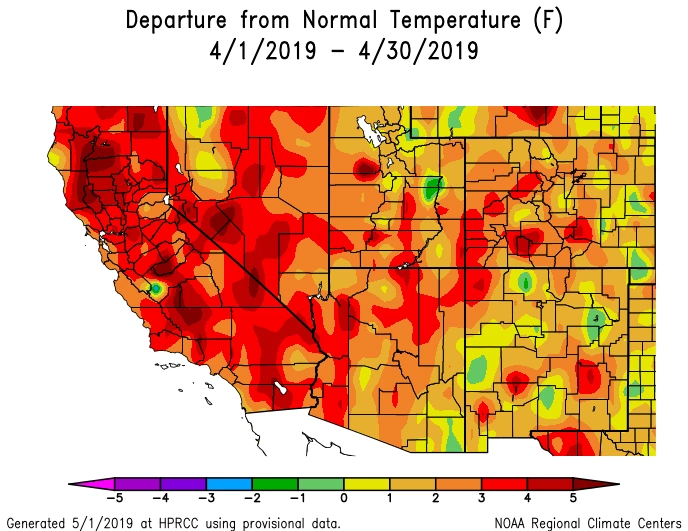
NOAA ACIS
Monthly precipitation totals ranged from less than 50% (red areas on map) to more than 150% (purple areas on map) of normal across most of Arizona and New Mexico. These may sound like big differences from average amounts, but as we know, April is a relatively dry month for the region with many areas typically receiving less than an inch of precipitation, and thus requiring irrigation in vineyards.
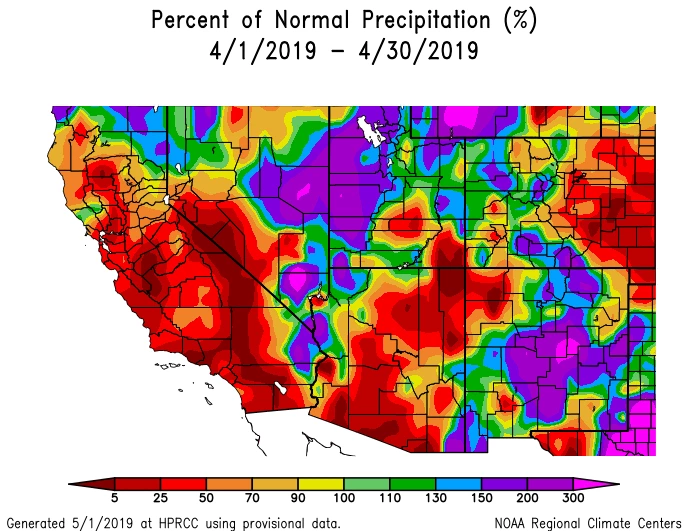
NOAA ACIS
The Outlook for May Temperature and Precipitation
There is a slightly increased chance for above-average temperatures across the southwestern half of Arizona (orange area on map), and for below-average temperatures across much of New Mexico (blue areas on map). Equal chances for above- or below-normal temperatures exist for the rest of the region (white area on map). With temperatures potentially above average in some areas and below average in others, we might expect differences this month in the timing of and time between growth stages of a cultivar at different locations. Cooler temperatures early in the growing season can slow down vine phenology.
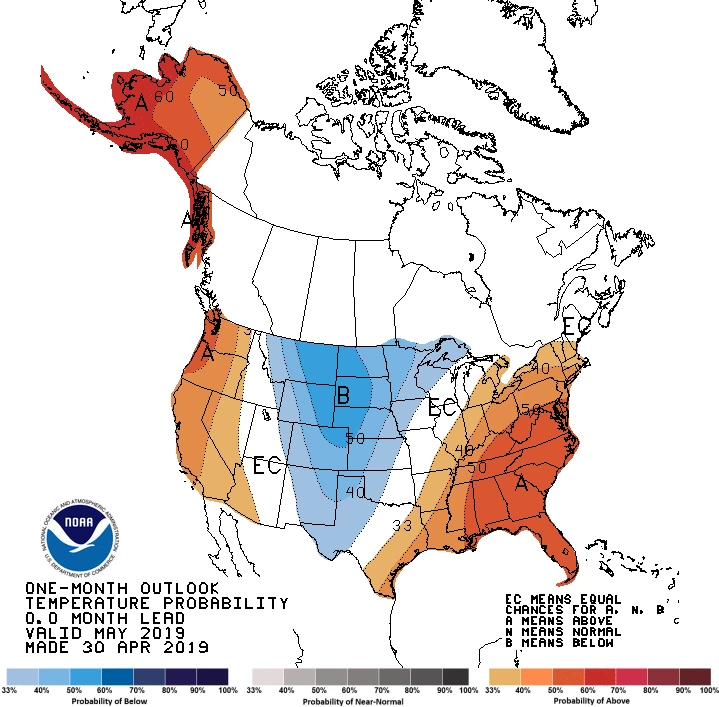
NOAA CPC
There is a slightly increased chance for above-average precipitation across both states (green areas on map) except for south-central New Mexico, where there are equal chances for above- or below-average precipitation (white area on map). Like April, however, May is a relatively dry month and above-normal rainfall totals could still amount to less than an inch for many areas, which means that irrigation savings could be minor. Nonetheless, let’s hope that any precipitation events that do occur will not negatively affect flowering and fruit set.
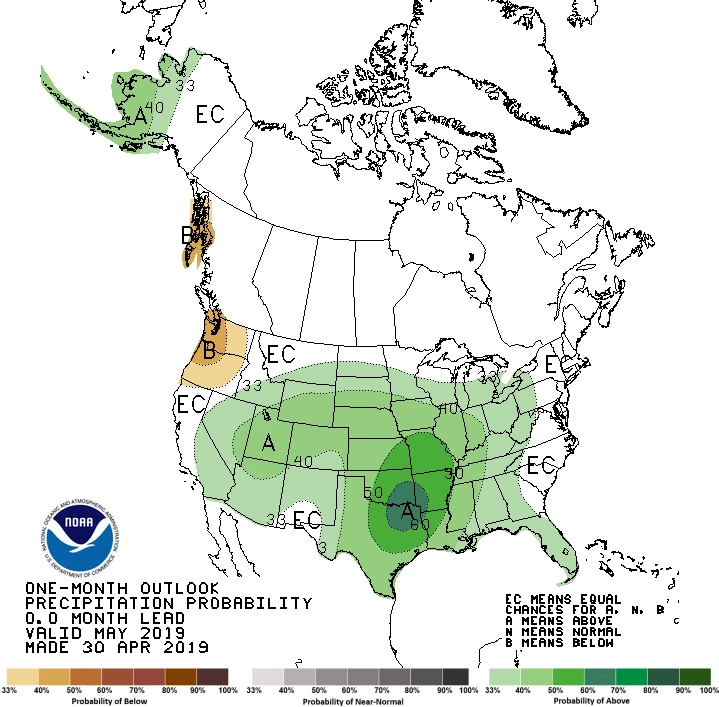
NOAA CPC
Heat Accumulation So Far This Year
A variable that helps us understand and predict the timing of vine growth stages is the accumulation of heat during the year, often quantified by the sum of growing degree days (GDDs).
We look to be starting May with accumulated GDDs that are a mix of below-, near-, and above-average values across Arizona. For instance, heat accumulations are near or below average in the Sonoita and Willcox American Viticultural Areas (AVAs), whereas they are near or above average in the proposed Verde Valley AVA. In New Mexico, heat accumulations are near or above average for much of the state.
Current accumulated GDDs appear to be different from values this time last year for several winegrape-growing areas. We’d be interested in hearing from you if this has corresponded to different dates at which you have observed early-season growth stages of the vine.
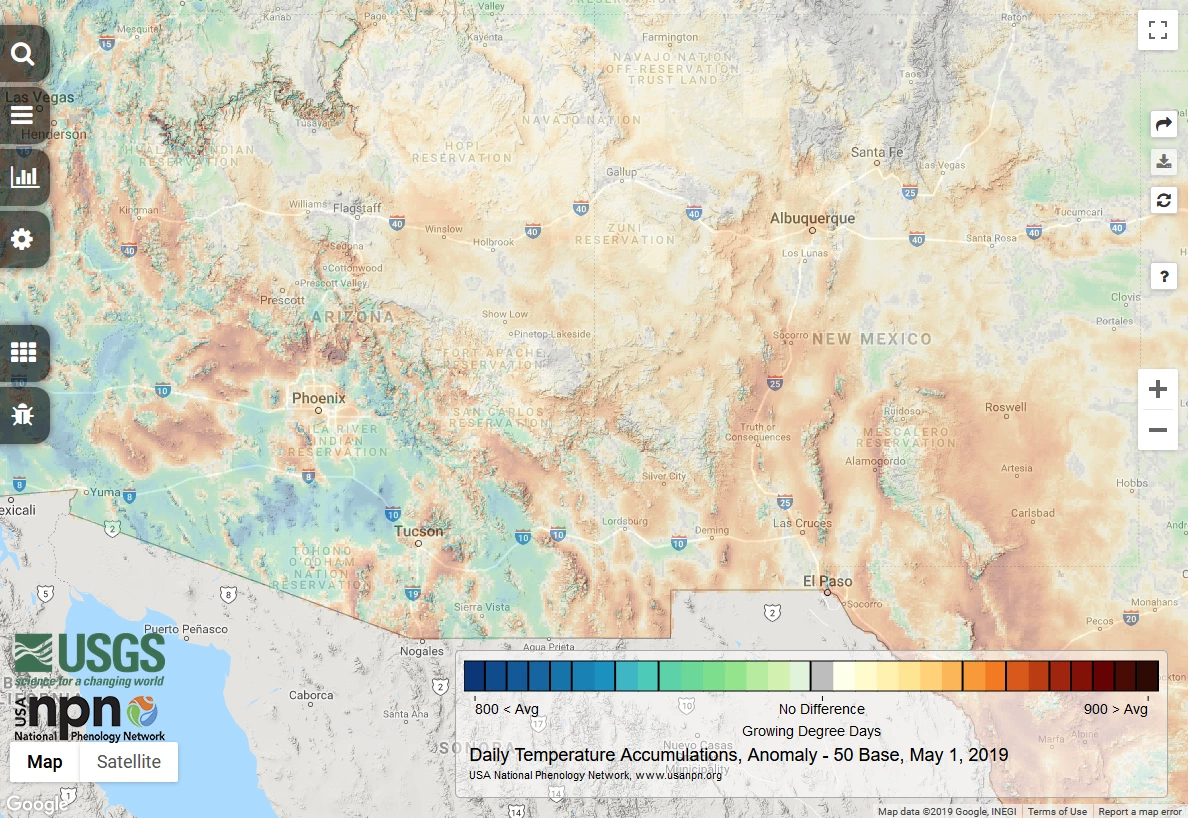
USGS NPN
'Tis the (Wildland Fire) Season
A lack of precipitation, warm temperatures, low humidity, and wind raise the potential for wildland fire by drying fine fuels – grasses, leaves, twigs, and shrubs – and making them easier to ignite and burn. Such hot and dry conditions across Arizona and New Mexico in May and June lead to the annual peak in wildland fire danger throughout the region. Smoke taint, which can eventually result in undesirable wine flavors and aromas, and displacement of insects from the burn area to a vineyard are two possible impacts to viticulture from wildland fire.
There is a below-normal potential for significant wildland fires across northeastern Arizona and northern and eastern New Mexico (green area on map), and an above-normal potential across southern Arizona and the western part of the New Mexico ‘boot heel’ (red area on map). Otherwise, the potential for significant wildland fires in the region is near normal (white area on map).
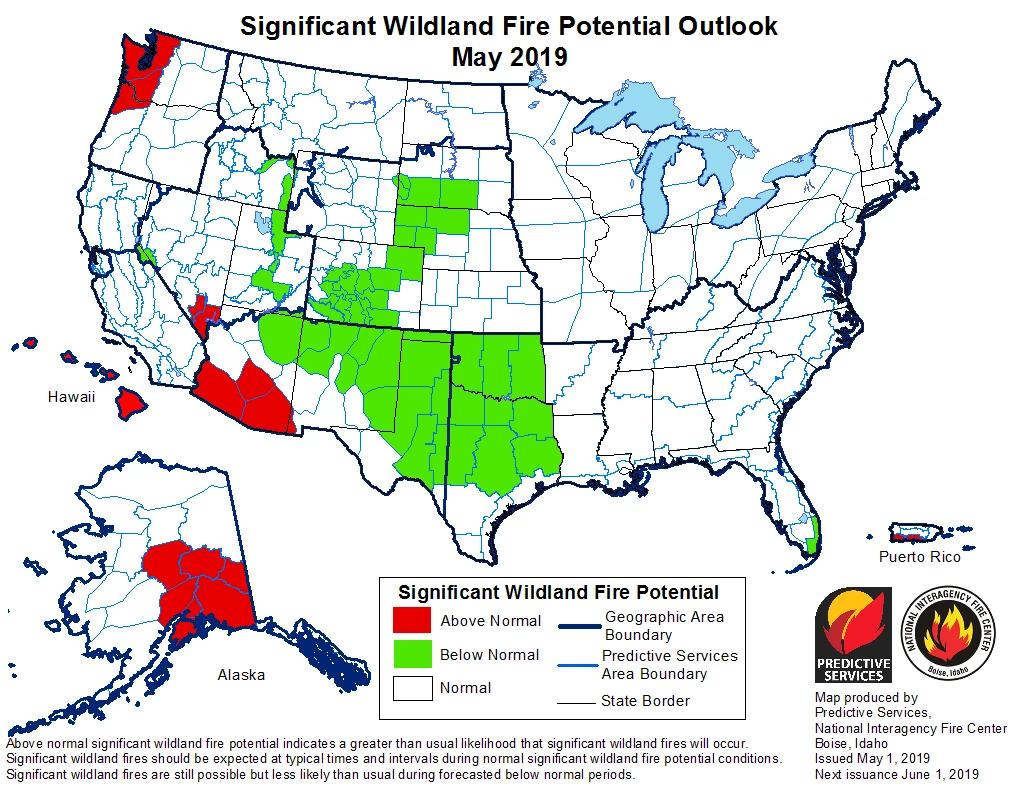
NICC NIFC
Thanks to all who contributed to the “Arizona’s Bounty: A Food & Wine Evening” event at the historic Old Main building on the University of Arizona campus in Tucson on April 12. There wasn’t an Arizona wine that night that we didn’t like!
Please feel free to give us feedback on this first issue of the Climate Viticulture Newsletter, suggestions on what to include more or less often, and ideas for new topics.
Did someone forward you this newsletter? Please contact us to subscribe.
Have a wonderful May!
With support from:




